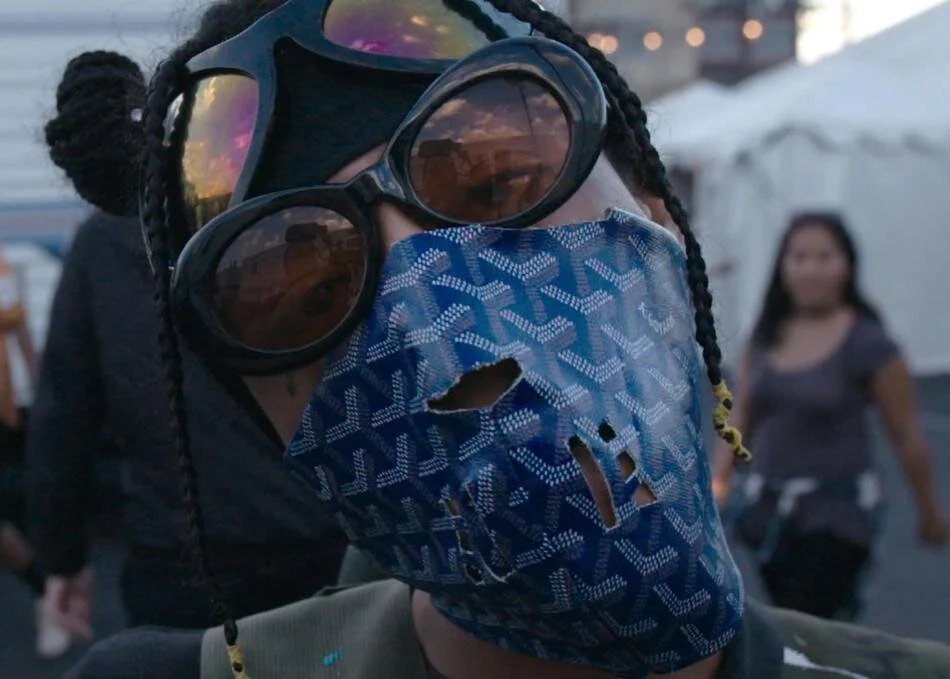Bloody Nose, Empty Pockets: A Documentary Like No Other
“Bloody Nose, Empty Pockets” by Billy Ross IV and Turner Ross: 9/10
Bloody Nose, Empty Pockets as a piece of art is strangely alluring in its premise, captivating in its simplicity, and understated in its execution. The setting is hazily atmospheric - neon red, smoky scenes in a dive bar in Las Vegas - aptly named The Roaring 20s - about to close its doors for the last time. The tavern, which seems to solely host regulars, is characterised by jumbled decorations - signs, curios, and assorted clutter - bizarre relics of Americana strewn lovingly all around the interior. Though we are experiencing the last day of this fine establishment, the bar is anything but finished, instead bustling with odd and fascinating patrons for one last session to forget. The dialogue and relationships of these people to one another is what the film so rewardingly captures - every wry personality, every profound take on life stays with you long after the curtains close. The bar provides the impetus, but it is the people who make the film.
Each weathered face, each dazed expression, each tired hand grasping a scotch glass and dishevelled cigarette. They all bring you into their intimate web of energy and confusion - garbled, endless conversations about romance, drinking, politics, America, life, anything. The words are muddled but the conversations are raw, all emotions are on show as always the case when drink is involved. The characters range from a Black Vietnam veteran with bitter misgivings, to a wise old drifter and ex-actor, from a lone Australian expat of few words to a glamorous Black trans woman and performer. Alcohol, nostalgia and dissatisfaction with life are their shared bond. This extends to the bartenders too, who are evidently juggling issues of their own outside of acting as therapists to the disparate regulars.
The documentary is fly on the wall but so loosely implemented that some patrons even play up to the camera or accidentally look directly into shot. This gives the project an air of brevity in otherwise bleak circumstances. Despite the obvious presence of the camera, any facades fade as the seemingly eternal night rages on. With lopsided plastic party hats and drink spillages, the night hits a peak involving drugs and fireworks before stagnating to finally end with a whimper. Throughout, regrets come to the fore and linger around the enclosed space, seducing the thinning crowd as the liquor flows, rising up like the smoke of dozens of unfinished cigarettes.
Behind the scenes security camera footage during filming
Directors Billy Ross IV and Turner Ross have created something special out of a very localised tragedy. It is evident from the onset that this kooky dive bar is more than just a second home to many loners, drifters, eccentrics and outcasts - it is a surrogate carer too. The patrons all share secrets with each other, and genuinely appear to rely on their fellow alcoholics to console them, listen to their warnings and tales of life’s bad turns. The nature of tragedy is dwelt upon in an unnervingly close to the bone fashion - overly familiar to those of us that have dallied in heavy drinking or even just attended a house party full of misfits.
But despite the latent theme of tragicomedy, Bloody Nose is far from a sad flick. The turbulence of the characters’ moods and their growing slurred speech only peppers the overriding feeling of ‘Fuck it, you only live once!’ in the piece. It exists as a candidly American celebration of living each day as it comes, of giggling and howling, of taking too many substances, of sharing memories with people you can call your friends - even if you do not count yourself as having anything else in this lonely world.
The bar is so obviously dear to its regular patrons, no matter how damaging this might be in enabling their alcoholism. This gives its inevitable closure, to come at the end of the documentary, a sour taste - provoking a profound feeling of injustice. The background to the bar closure is hinted at as a product of gentrification and redevelopment, a tale as old as time in capitalist reality. It is edifying to see these people from all walks of life being themselves, singing and dancing whilst the America outside their mini-worlds trudges away, for better or worse.
This is illustrated best when snippets of television are shown - far away serious voices, espousing sensibilities which have no semblance of meaning or reliability to our colourful characters. And it shows. This is not just applicable to news reports, but popular culture too - best exemplified when several patrons try unsuccessfully to answer questions on the TV quiz show ‘Jeopardy!’, leading the bearded, gentle giant bartender to eloquently retort, “Fuck this game! What are we watching this for, to feel stupider? Like I need to feel dumber today…”
There is some controversy over how much of a ‘documentary’ Bloody Nose should be considered, given how closely the setting was managed. It was surprising to learn that the bar itself was in New Orleans instead of the exterior neon setting of an anonymous Las Vegas strip. The subjects, real regulars at The Roaring 20s, were apparently chosen by the directors, bending our perception of the documentary genre in regards to deciphering what is real and what is not. This doesn’t take away from the authenticity of the final product, which is still far from scripted, but may give slight pause for thought when hearing an outlandish tale or meandering from the vibrant clientele. Realising this did little to detract from the impact of the directors’ vision - which is so intriguing because of such artistic choices, not in spite of it.
Bloody Nose functions as a love letter to a lost, cheap divey American bar and with it, a lost American dream, with each individual mourning parts of their existence, whether that be the loss of youth or simply wasted opportunities. The real emotional consequences of drug vices -depression, anger, self-loathing, bouts of frustrated aggression - are all explored in painful detail by this visceral and intimate character study. In this sense, Bloody Nose operates as a conclusive, steadfast demonstration that after laughter comes tears. The ugliness of drinking and the beauty of socialising, and vice versa, comes together to mould this incredibly gratifying and penetrating glimpse into one crumb of Americana - with its streaks of rebellion, daydreams and, of course, heartbreak.
Our Out Now series brings you the best newly released feature documentaries. Get in touch to pitch your film.










